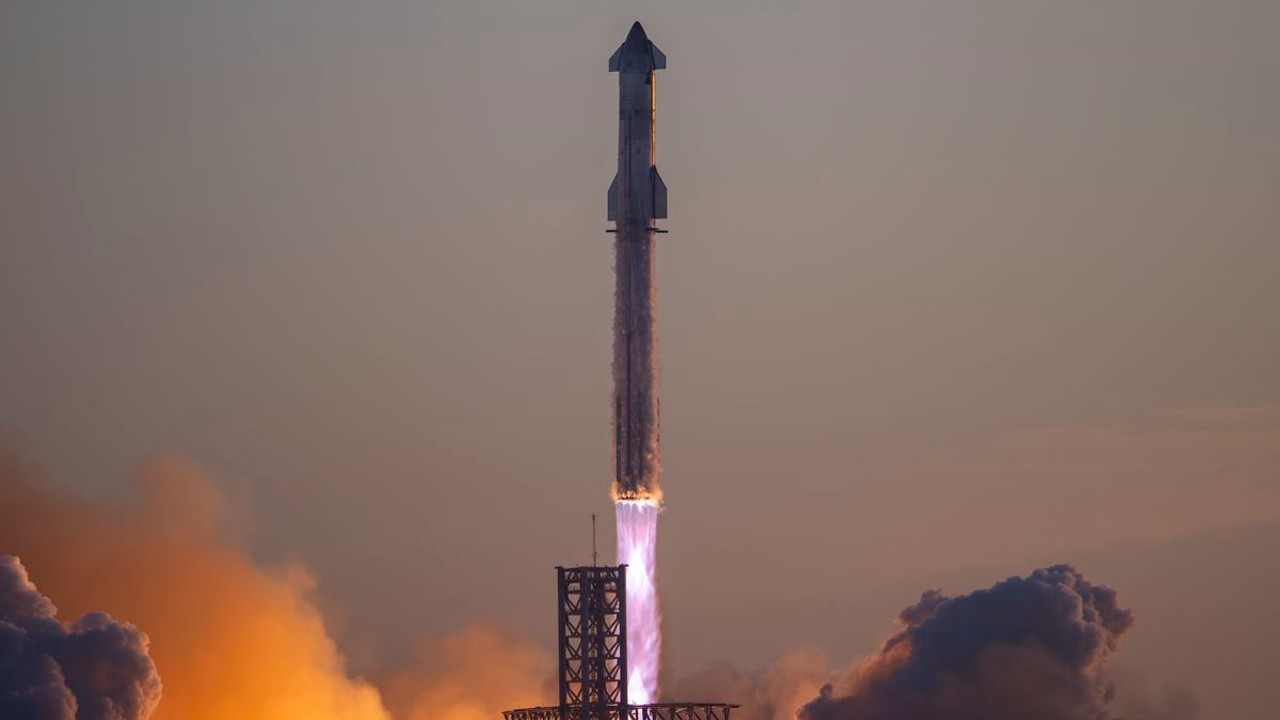
The U.S. Federal Aviation Administration (FAA) has closed the investigation into the second flight of SpaceX's huge Starship vehicle, the agency announced this afternoon (Feb. 26).
That test mission, which launched from SpaceX's Starbase site in South Texas on Nov. 18, ended with a bang. Two bangs, actually: Both of Starship's stages exploded high above Earth, around 3.5 minutes and eight minutes after liftoff, respectively.
Ever since, SpaceX has been prepping for Starship flight number 3, in keeping with the company's fast-paced "build, fly and iterate" philosophy. But today's news does not constitute clearance to launch, the FAA stressed.
"Prior to the next launch, SpaceX must implement all corrective actions and receive a license modification from the FAA that addresses all safety, environmental and other applicable regulatory requirements," agency officials wrote in an emailed statement today.
"The FAA is evaluating SpaceX’s license modification request and expects SpaceX to submit additional required information before a final determination can be made," they added.
Related: See stunning photos and video of Starship's 2nd launch
The mishap investigation, which SpaceX led, identified 17 corrective actions, which the FAA accepted. Seven of them concerned Starship's huge first-stage booster, known as Super Heavy, "including vehicle hardware redesigns, updated control system modeling, reevaluation of engine analyses based on OTF-2 [Orbital Flight Test-2] flight data and updated engine control algorithms," the FAA's emailed statement reads.
The other 10 corrective actions deal with the vehicle's 165-foot-tall (50 meters) upper stage, which is called Starship. Among these modifications are "vehicle hardware redesigns, operational changes, flammability analysis updates, installation of additional fire protection and guidance and modeling updates," FAA officials wrote.
The stainless-steel Starship is the biggest and most powerful rocket ever built. When stacked, it stands about 400 feet (122 meters) tall — and future versions will likely be even taller, according to SpaceX founder and CEO Elon Musk.
The company is developing the fully reusable vehicle to help humanity settle the moon and Mars and perform a variety of other ambitious exploration feats. NASA is invested in the vehicle's success; the agency picked Starship to be the first crewed lunar lander for its Artemis moon program.
Starship first flew in April 2023. The vehicle suffered a number of issues on that mission, including the failure of its two stages to separate as planned, and SpaceX detonated the tumbling craft about four minutes after liftoff.
Things went much better on flight two this past November. The two stages separated on time, for example, and the upper stage likely would have reached orbit if it had been carrying a payload, Musk said last month. (The upper stage's detonation was caused by a venting of liquid oxygen, and there wouldn't have been any liquid oxygen left to vent if Starship had been carrying a satellite, he said.)
The FAA closed the investigation of Starship's first flight on Sept. 8 of last year, and the vehicle got off the ground again on Nov. 18. But you shouldn't expect such a lengthy wait this time around, considering how much progress SpaceX made on flight number two. That first-flight investigation, for example, identified 63 corrective actions for SpaceX to make, compared to 17 after the November launch.







